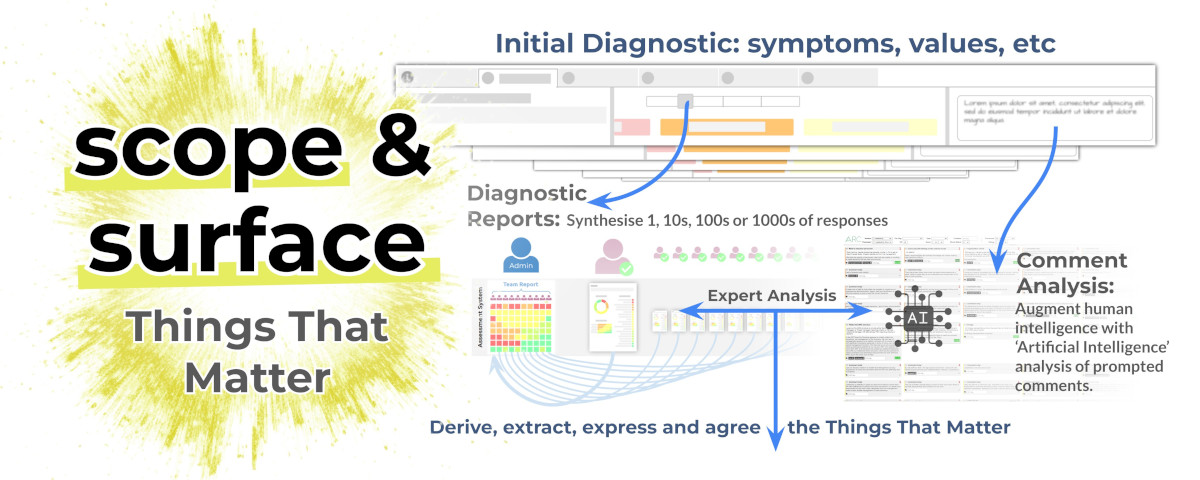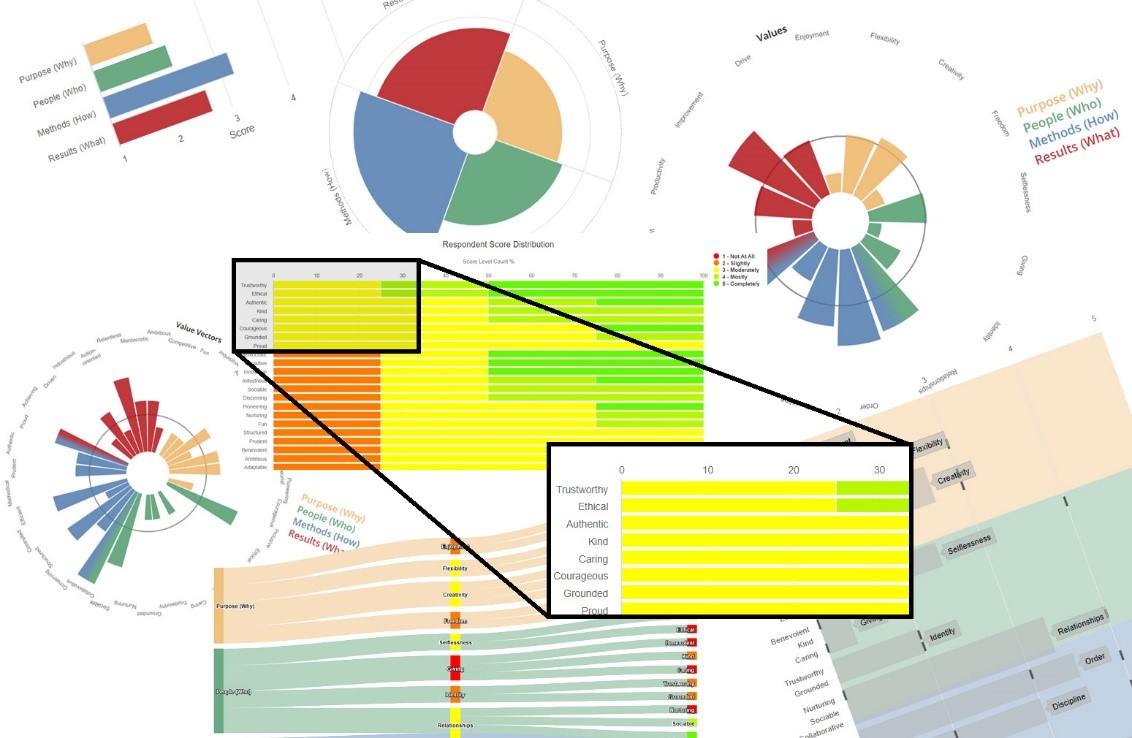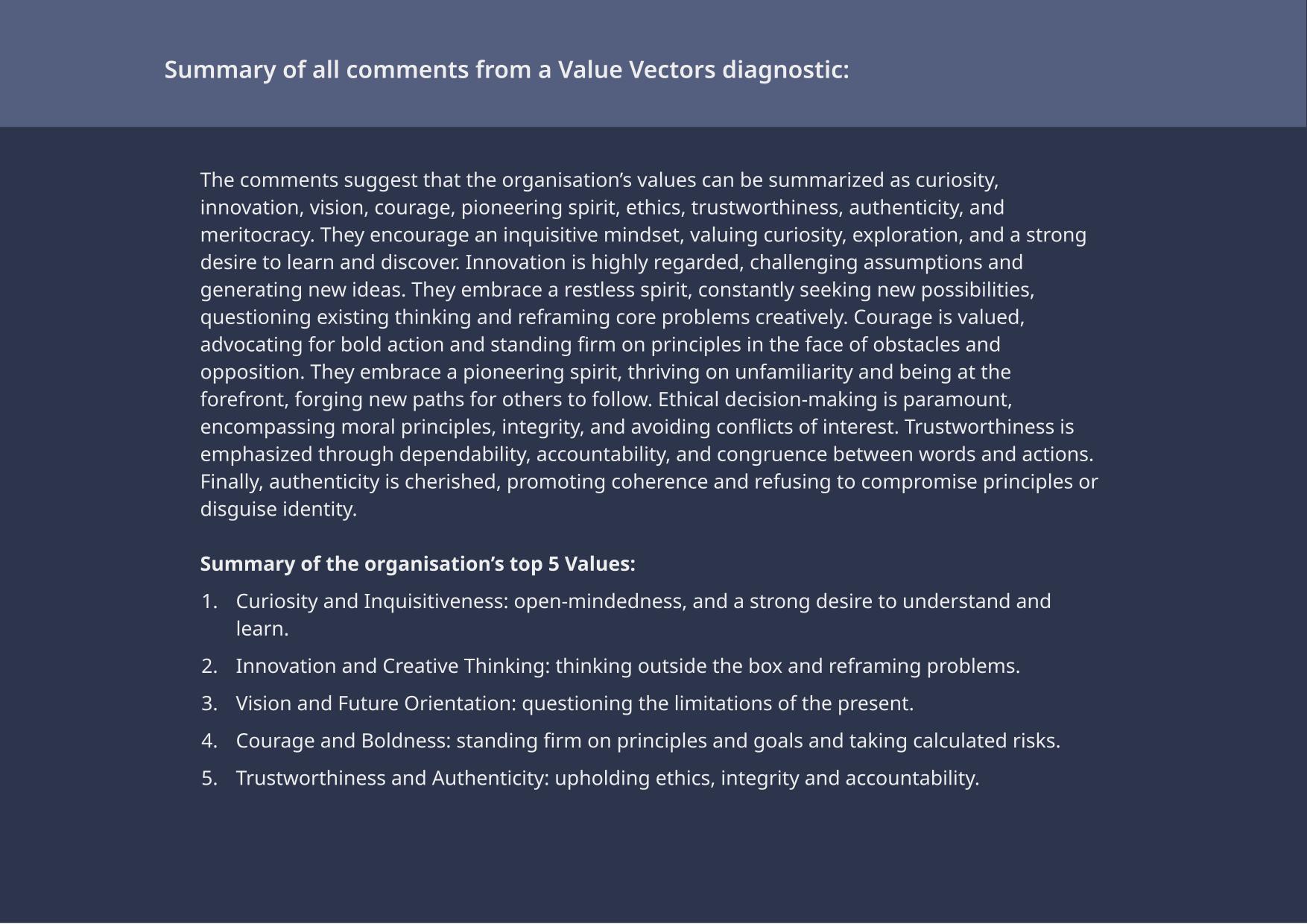Clarifying Values: Step 1
Scoping and Surfacing the Things That Matter is the first of the three steps to clarifying values:
- Scope & Surface
- Capture & Refine
- Measure & Progress

There are two “extremes” to avoid when looking to scope and surface the Things That Matter:
- Giving too much context as a starting point, usually in the form of using existing materials (contracts, standards, mission statements, etc): these usually overly pre-judge and limit scope, and they almost always don’t capture crucial, subjective Things That Matter.
- Giving too little context, usually by “brainstorming”: this may be effective in a totally open-ended situation – at the start of a new initiative, perhaps – but even then people usually struggle with unlimited scope and a “blank piece of paper”.
Experience therefore shows that the easiest and most effective way to begin scoping and surfacing the Things That Matter is to run a diagnostic, which achieves the difficult middle ground between these two “extremes”.
A diagnostic introduces real-life things to catalyse open-ended, focused and creative thinking, without assuming scope. It also operates at a far greater scale than e.g. interviews or workshops – 100s or even 1000s of participants – all reinforced by secure online access and anonymity that encourage open feedback.
Value Vectors Diagnostic acts as a catalyst
NIP’s Value Vectors Diagnostic focuses on values and behaviours as a way to explore culture, investigate possible root causes of issues and identify the opportunities that flow from the unique values profile that emerges.
[In some situations, it can also be run in parallel with NIP’s Symptoms of What’s Not Working Diagnostic, which focuses on issues and problems with the Things That Matter as a way to remove barriers, dissipate negativity and show people that real-life issues will be addressed.]
The diagnostic can also be customised, specific to the situation, rephrasing the content in ways that will connect even more with those engaged.
Diagnostic and Artificial Intelligence (AI) analysis
The next stage is to analyse the output with a combination of the reports produced by our diagnostic framework and comment analysis (augmented by AI).
Here are samples of the report charts that highlight the most likely candidate Things That Matter:
The candidate Things That Matter that emerge from the diagnostic reports are then refined further by expert interpretation, augmented by guided AI analysis of comments.
In this way, the diagnostic effectively functions as a powerful “prompting” mechanism to get the most out of the human intelligence available – prompting people to think creatively about the Things That Matter.
In this way, the diagnostic effectively functions as a powerful “prompting” mechanism to get the most out of the human intelligence available – prompting people to think creatively about underlying values that underpin the Things That Matter, which AI can then further enhance:
These findings are then fed forward to the next stage and can be used in the meantime to build or support a business case for change.
After all, specific issues have now been surfaced, and – with diagnostics – this has been done at scale, supported by evidence: evidence in terms of people engaging (potentially 100s of individuals), and evidence in terms of content (potentially 1000s of comments).
All of this evidence can now be made sense of and harnessed.



